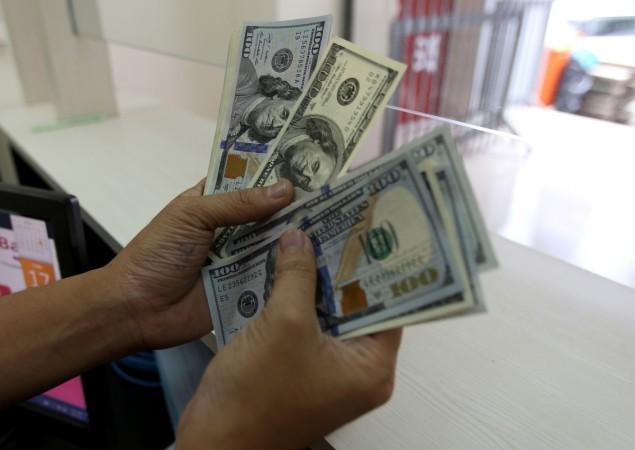
India's foreign exchange reserves dropped by $4.34 billion in the first week of October to $367.64 billion as the country gears up for a massive dollar outflow due to billions of dollars in deposits nearing their maturity. India had raised about $25 billion by way of three-year FCNR deposits in September 2013 to overcome the sharp fall in its domestic currency, rupee.
The foreign exchange reserves had risen by $1.22 billion to hit a historic high of $371.99 billion as of September 30, 2016.
The fall as of October 7 was primarily due to the $4.32-billion decline in foreign currency assets, which form the largest component of the country's reserves, according to the data published by the Reserve Bank of India (RBI) on Friday. Gold reserves remained unchanged at $21.40 billion.
While the RBI does not explain the reasons for movements in reserves, the sharp fall of $4.34 billion is being seen as an outcome of the foreign currency non resident (FCNR) deposits maturing after the three-year tenure.
The dollar outflow was highlighted by a DBS Bank economist as early as in June this year.
"Some $25 billion in foreign currency non-resident or FCNR (B) deposits raised to stabilize the rupee in 2013 will be maturing in Sep-Nov. About four-fifths of these deposits are unlikely to be rolled over, which in turn, could result in $20 billion in outflows. Expect some short-term impact on the balance of payments, strain on domestic liquidity conditions and a temporary bout of rupee volatility," Radhika Rao, economist, group research at DBS Bank had said in her June 10 note.
"Of the total $34 billion raised, banks mobilised $24-25 billion under the FCNR (B) deposits, which they then swapped with the RBI at attractive rates. This involved the central bank providing rupees in return for dollars to the banks, which will be neutralised at maturity as the banks return the rupees to the RBI, in exchange for their dollars (plus interest)," she had explained.
The impact on the rupee is unlikely to be substantial as a result of the dollar outflow, Rao further said in her analysis. "On the rupee, beyond a temporary bout of volatility, we don't anticipate any long-lasting impact from these deposit withdrawals."

















